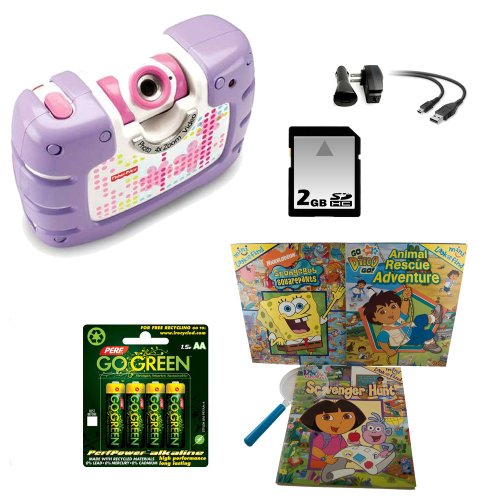The world wide web eats content like I eat chips. Here one minute, gone the next. So, the content that you maintain on your blog won't deliver impact for long.
Search engine bots will view any content over 31 days old as yesterday's news and your site ranking doesn't get any better. And if a repeat visitor stops by and sees that same content you had up three weeks ago, well, after a while, those repeat visitors stop visiting.
So, new, fresh, juicy content improves your web site in the eyes of search engines (who love fresh, informational content) and in the eyes of site visitors who keep coming back for more helpful information.
But here's the thing. Content generation - good, optimized content generation is expensive and a lot of start-up web businesses simply don't have the capital to pay a copy writer for new content every day.
Now, what are your options, and what are the pros and cons of each option.
Content Mills
Primarily located off-shore in India, the Philippines, Pakistan, the Ukraine and elsewhere, these companies turn out content by the mega ton for as little as .00 a page. So, for bucks, you end up with 50 different, one-page articles on camping or urology or whatever the topicality of your web site.
Is the content any good? No. It's written by English speakers but English isn't the native language so you get some humorous translations. One of these content mills sent a client an article that claimed that the U.S. government was "up to the business of the monkey." "The business of the monkey?" What the heck????
Well, after reading it over and over, we figured out that the writer meant "monkey business," an English idiom that was translated literally.
These rooms full of off-shore writers don't spend a lot of time on research, the content is usually general in nature and, of course, it has to be Anglicized to the Queen's English before posting. You can provide a list of keywords and the off-shore writers will do their best to work them in but don't expect miracles.
There are also U.S.-based content mills. The price is a little higher - an article - but the syntax still won't be perfect, the grammar would make my 8th grade English teacher cringe and, again, very little research is conducted. These content mills offer low cost content - somewhat optimized - but it isn't very impressive and, frankly, it won't "WOW" readers.
Use this content spam as a last resort.
Ask An Expert
Working on a urology web site. I'm no expert on urology or urological conditions and treatments. So, I work with a content expert - a urological surgeon who provides the hard information that I edit and make sound good. I also pepper my expert content with keywords at about a 2% density - two keywords for every 100 words of text.
Ask an expert to contribute content to your site. Have her write up the document and provide a link back to the author's site. This builds authority for the expert, it adds credibility to your web content, it builds trust, and readers get expert, authorative information. Everybody wins.
Content Syndication
You'll find heaps of good articles on content syndication sites like EzineArticles, Helium, Zimbio, GoArticles and other sites that distribute articles and blog posts free. You simply download the article, post it to your site and provide a back link to the author's site in exchange for the use of the content.
The upside to syndicated content is that it provides readers with articles and information that they've never seen before. That's good.
There are several downsides, however. Syndicated content is downloaded to many different sites, all targeting the same demographic. This is duplicate content and when search engine spiders discover duplicate content, you encounter a negative ranking factor - part of Google's algorithm.
Another downside? Part of the deal is you provide a link to the author's site - an opportunity for a site visitor to leave your site with a click. It's not tough to imagine a scenario in which one of your site visitors reads a syndicated article, likes what she reads and clicks to the author's site for more of that helpful content.
The general rule in web site marketing: once you have visitors on site, keep them on site for as long as possible. The longer they stay on site, the more likely they are to buy a product, engage your services, opt-in for your free newsletter or download your eBook for .95.
Add Free Videos
YouTube and other video sites contain libraries of videos on everything from how a hearing evaluation is conducted to all-accordion bands playing Led Zeppelin tunes (very funny). These videos can be embedded in your web site free, again, as long as you provide a link back to the original YouTube URL - the place the video appeared.
Search for videos that will appeal to site visitors. Understand that search engine bots are incapable of "reading" videos so a spider won't know what information the video includes.
Add an tag describing the content in the video to get a little search engine love, but don't expect a huge jump up on Google's search engine results pages, also called SERPs.
Also, once again, by posting a video clip, you do, indeed, provide fresh content to readers. However, by clicking on the video, visitors are taken to the source of the video and off your site.
To add a video you believe will be useful, find the embed code located on the same page as the video itself. Cut and paste this embed code into your site's HTML code, place the video on the page, and location on the page, you think will deliver the most impact and engage visitors with a "talkie" instead of page after page of static, (Yawn) boring text.
Hire a Friend, Your Kid or Do It Yourself
Lots of people are convinced they can't write and you know something, they can't. They're downright awful writers.
But a lot of folks are better writers than they give themselves credit for. A site owner knows his demographic, understands the mission of her web site - in fact, site owners are the 'content experts' when it comes to any site's mission.
So even if you don't know the difference between their, there and they're, you can at least get it down on paper. And if sitting at the keyboard is a hindrance or stumbling block, set up the voice to text option under the "Accessibilities" link and talk it. Most of us can wax eloquently when describing our web-based activities but freeze up as soon as we sit down at the keyboard to write our first blog post.
(Darn schools scared us into thinking that if it weren't perfect it wasn't right, scaring millions of people from creating their own content.)
Write out a 600-word blog post about the topicality of your site. If you sell macramé supplies, post a new knot configuration with pictures YOU take with a cheapie digital camera. (Don't spend beaucoup bucks on your camera. Images, like pictures, are usually compressed in transmission and are delivered in low-resolution format that looks just fine on a computer screen.)
If your site is all about paper airplanes, provide a couple of freebie folding templates every few months. Free content. Few words.
Or, if you're a stock picking guru, post real-time prices of the stocks in your portfolio. Talk about site stickiness. That stock picking guru has a couple of thousand subscribers glued to their computers watching their stock prices rise and fall all day long.
Hire someone from the local paper or do something really nice and talk to the advisor of your town's high school newspaper to find budding reporters who would LOVE to see a by-line on your web site. Pay them a few bucks, too. Low-cost good-will and you'll have a stable of eager content providers who are getting virtual world experience writing for your web site.
NOTE: Before you contact any member of the high school or local collage newspaper staff, discuss your proposal with school newspaper's faculty advisor and principal, or dean if necessary.
A critical key to web site success is fresh, juicy content - less than a month old. That's about how long you derive SEO value from site text. However, you derive conversion value if you keep them coming back with lots of new, helpful content, light on the sales hype.
So keep your site current. Change content at least twice a week. The more the better. In no time, search engine bots will recognize your new content in under an hour and you'll build more SERPs links with every post you make.
Yep, the W3 is a giant maw that consumes content by the kilo daily. Keeping your site fresh and green is a critical part of SERPs ranking and conversion ratio so keep them coming back, and may the Google gods smile upon your freshly updated web site.













